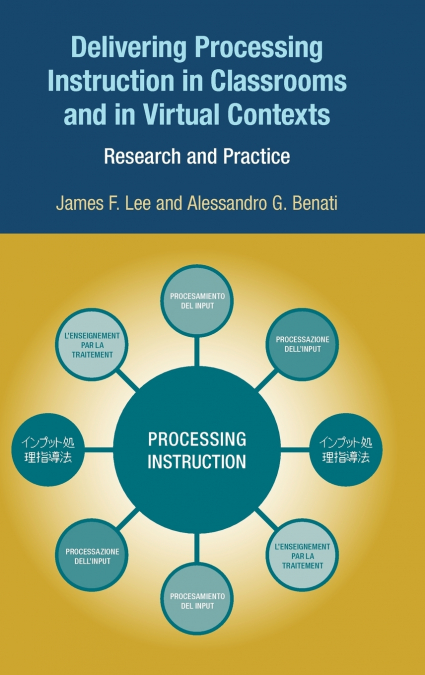
Alessandro G. Benati / Alessandro GBenati / James F. Lee / James FLee / John Lee
 Donde los libros
Donde los libros
 Librería 7artes
Librería 7artes
 Librería Elías (Asturias)
Librería Elías (Asturias)
 Librería Kolima (Madrid)
Librería Kolima (Madrid)
 Librería Proteo (Málaga)
Librería Proteo (Málaga)
Processing Instruction (PI) is an approach to grammar instruction for second language learning. It derives its name from the fact that the instruction (both the explicit explanation as well as the practices) attempt to influence, alter, and/or improve the way learners process input. PI contrasts with traditional grammar instruction in many ways, most principally in its focus on input whereas traditional grammar instruction focuses on learners’ output. The greatest contribution of PI to both theory and practice is the concept of “structured input”, a form of comprehensible input that has been manipulated to maximize learners’ benefit of exposure to input.This volume focuses on a new issue for PI, the role of technology in language learning. It examines empirically the differential effects of delivering PI in classrooms with an instructor and students interacting (with each other and with the instructor) versus on computers to students working individually. It also contributes to the growing body of research on the effects of PI on different languages as well as different linguistic items: preterite/imperfect aspectual contrast and negative informal commands in Spanish, the subjunctive of doubt and opinion in Italian, and the subjunctive of doubt in French. Further research contributions are made by comparing PI with other types of instruction, specifically, with meaning-oriented output instruction.